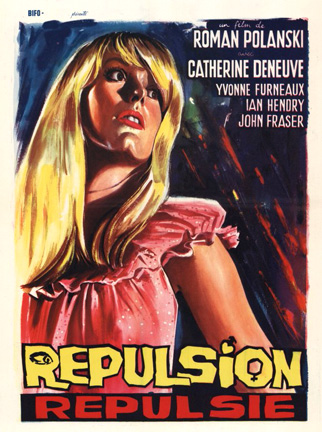
I think I knew what Antichrist was all about right from the opening credits. It begins, in crude, distorted handwriting, with the words ‘Lars Von Trier’ followed by ‘Antichrist.’ Lars Von Trier is the director of this film and the opening credits can be taken as a sign that the Dogme days—of handheld cameras and absent music and no directorial credit--are over. What we are seeing here are pages torn from Von Trier’s coloring book.
Antichrist, starring Willem Defoe and Charlotte Gainsborough, is playing in select theaters in what is apparently an ‘uncensored’ version; and I don’t see how it can get any less censored. Defoe and Gainsborough are a couple who live most of their days in some nameless city, and who’s lives are interrupted when their son falls out his window one day, while they are busy copulating, to his death. In the ensuing days, Defoe and Gainsborough (their characters are nameless) attempt to come to terms with their relationship in the wake of such a tragedy. Hit the hardest is Gainsborough, who is suffering from post-traumatic stress. Defoe has assigned himself the role of her therapist—apparently his profession—and eventually the two agree that they must visit their cabin in the remote wilderness to sort things out. It is the wrong decision. Defoe is troubled by visions of animals inflicting savagery on themselves or on other animals, one of them being a very prophetic fox. He is angered by the notes his wife left behind the last time they stayed at the cabin—notes that were supposed to be for a thesis she was writing, but indicate far more sinister things. As Gainsborough slips in to a more psychotic state, Defoe comes along with her.

The story has already shown a sign of irrationality before they get to this sinister-looking forest. A husband being his own wife’s therapist is a sketchy decision, especially if he is Willem Defoe. But rationality is not Von Trier’s goal, and his film becomes overall a psychosexual fantasy about irrational states. This calls for a visually preachy, gothic-fantasy style of storytelling, and in this sense, Antichrist recalls the style of the late Andrei Tarkovsky, to whom the film is dedicated. It shares both the strengths and the weaknesses of Tarkovsky’s films, too. Von Trier is as interested as Tarkovsky was in co-opting various artistic sources in to his own sense of gloom. The idea of people who are lost in the middle of life ending up in the woods is reminiscent of Dante’s Inferno. This reminiscence gets stronger when we understand that Gainsborough is afraid of Satan and that the forest is plainly possessed by some sort of evil. Some of the images, well-shot by Anthony Dod Mantel, recall baroque or early surrealist art; hands coming out of a tree trunk while Defoe and Gainsborough make love, a figure moving slowly through a foggy forest, surrounded by shapes. A clinically depressed Heironymous Bosch might have made Antichrist.
Yet Trier’s film cannot hold together given some of the odd choices he makes and the painfully cheesy instincts he gives in to. Trier has always liked the chapter format—at least since Breaking the Waves—but the last thing Antichrist resembles is a book, and it would have been more thrilling if it had all just flowed together, without hints as to what we’re supposed to feel about each segment. The last chapter is, inevitably, the most long-winded, and amidst all the mayhem that Defoe and Gainsborough inflict on one another (therapy has failed at this point), Trier loses a sense of the basics of directing; for example, in one climactic scene, a large foxhole that lies some ways from their cabin suddenly seems to sit right next to it. Trier also stops caring about treating his characters fairly; Defoe becomes as emotionally manipulative as Gainsborough becomes violent, yet he is still supposed to be a moral center for the film. But Trier’s biggest mistake was in attaching symbols to everything in sight; the foxhole is symbolic, acorns are symbolic, and even the animals turn in to incredibly obvious symbols. As a result, the creepiness of earlier scenes earlier scenes loses momentum. Trier is a great stylist of shock and misery, but he is also a belligerent child, who tears up his coloring book and throws it in our faces. When he made his earlier films of visual extravagance, he wanted us to become intoxicated by their cinema, not their symbols. It is, perhaps, an inevitable fate of stylistic pioneers; even Tarkovsky went the same way.



 (
( (
( (
( (
(